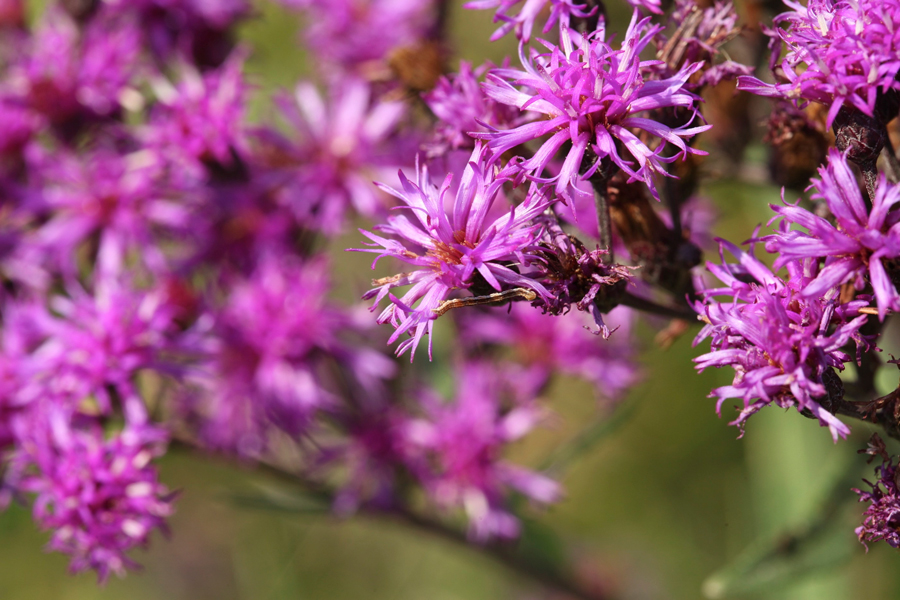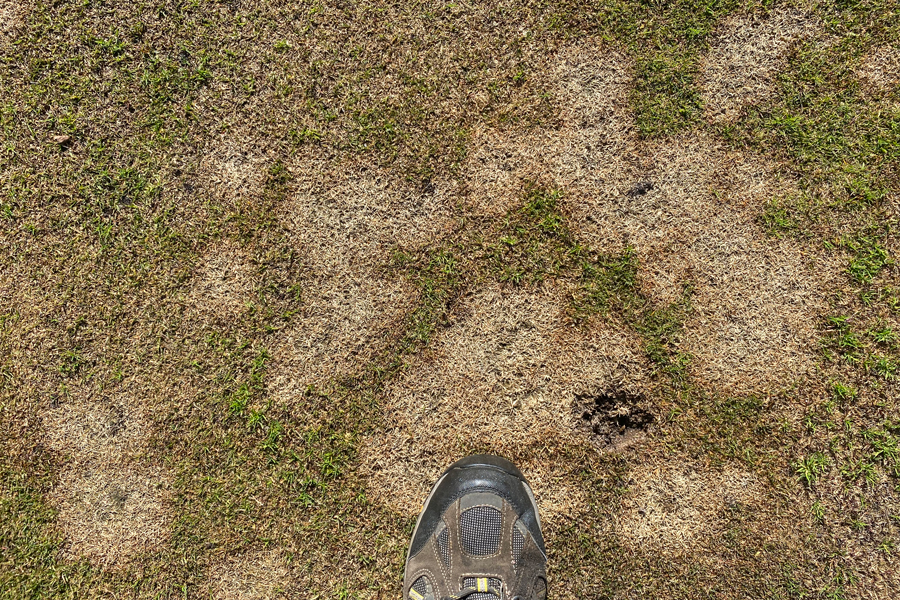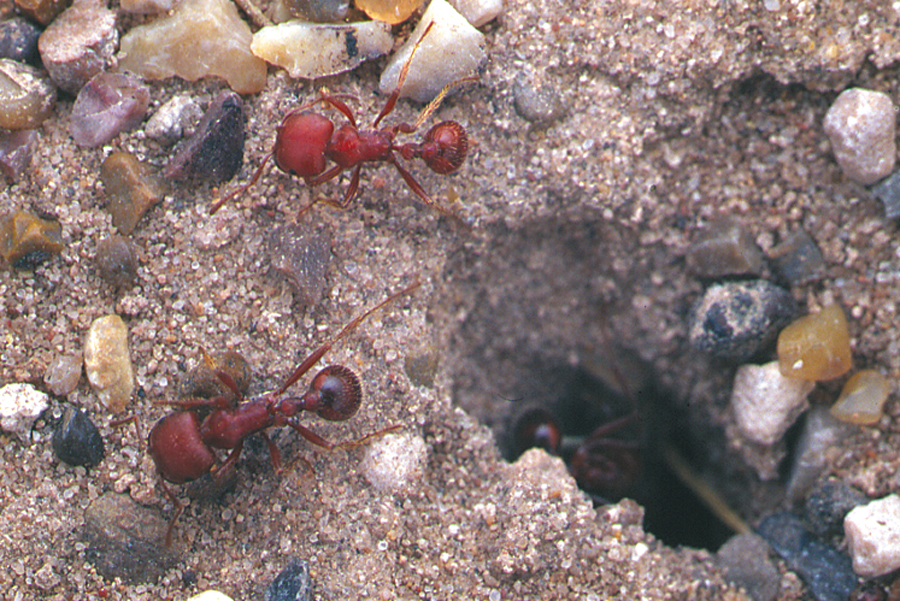Lawn and Garden
-

This publication is intended to be a quick guide for plant enthusiasts of North Georgia. Each plant listing is accompanied by a photograph and a brief plant description. The description contains the common name, scientific name, leaf description, flower description, habitat and plant uses.
Mickey P. Cummings and Bodie V. Pennisi
|
-

Composting is the controlled biological process of decomposition and recycling of organic material into a humus-rich soil amendment known as compost. Mixed organic materials such as manure, yard trimmings, food waste and biosolids must go through a controlled heat process before they can be used as high quality, biologically stable and mature compost (otherwise it is just mulch, manure or byproduct). Compost has a variety of uses and is known to improve soil quality and productivity as well as prevent and control erosion.
L. Mark Risse, John W. Worley, and L. Britt Faucette
|
-

This publication contains information on Microdochium patch, an emerging disease in the state of Georgia. This circular contains the biology of the causal agent, as well as a detailed description of the disease symptoms (with detailed pictures), relevant up-to-date information on conditions favoring the disease, as well as cultural, genetic and chemical methods of control. The publication is aimed at turfgrass professionals, sod growers, consultants, county faculty, students, and the general public.
Alfredo Martinez and Bochra Amina Bahri
|
-

Hispanic workers predominate in Georgia’s urban agriculture industry, comprising almost three-fourths of the workforce. Employers must ensure comprehension and safety compliance, address language barriers to create a safe workplace, use physical demonstrations, diagrams, bilingual materials and, if available, an interpreter. This publication covers general precautions, equipment safety, pesticide safety and other information that is necessary for keeping employees safe. It is also available in Spanish.
Alfredo Martinez and Ellen M. Bauske
|
-

Los hispanos representan la minoría más grande de los Estados Unidos con 42.7 millones de habitantes. Los trabajadores hispanos predominan en la industria de la agricultura urbana del estado de Georgia y conforman casi las tres/cuartas partes del total de obreros del estado. Los supervisores deben garantizar la comprensión e implementación de la seguridad laboral. Es imprescindible reconocer las barreras de comunicación para mantener un área de trabajo donde predomine y se haga efectiva la seguridad laboral. Use demostraciones, dibujos, materiales bilingues, y si es posible, un intérprete.
[Hispanic workers predominate in Georgia’s urban agriculture industry, comprising almost three-fourths of the workforce. Employers must ensure comprehension and safety compliance, address language barriers to create a safe workplace, use physical demonstrations, diagrams, bilingual materials and, if available, an interpreter. This publication covers general precautions, equipment safety, pesticide safety and other information that is necessary for keeping employees safe. It is also available in Spanish.]
Alfredo Martinez and Ellen M. Bauske
|
-

Imported fire ants interfere with outdoor activities and harm wildlife throughout the southern U.S. Ant mounds are unsightly and may reduce land values. Although fire ants do prey on flea larvae, chinch bugs, cockroach eggs, ticks and other pests, the problems they cause usually outweigh any benefits in urban areas. While it is not possible to eradicate this species, controlling fire ants is highly desirable. The best control programs use a combination of non-chemical and chemical methods that are effective, economical and least harmful to the environment.
Dan Suiter
|
-

Many people help with tree cleanup after storms pass through. Some are citizen volunteers, and others are private and public sector workers who may or may not have experience with chainsaws. This presentation covers the information every chainsaw operator needs to know before turning on the saw. Topics include personal protective equipment, the five essential safety features of a chainsaw, safe carry, safe start, insect pests, site inspection, and electrical/electrocution hazards. Authors include E.M. Bauske, W. Williams, H. Kolich, J. Fuder, and A. Martinez-Espinoza.
Alfredo Martinez, Ellen M. Bauske, Heather Kolich, and Josh Fuder
|
-

Muchas personas ayudan con la limpieza de los árboles después de las tormentas. Algunos son ciudadanos voluntarios; otros son trabajadores del sector público y privado que pueden o no tener experiencia con motosierras. Este PowerPoint cubre la información que todo operador de motosierra necesita saber antes de encender la motosierra. Los temas incluyen equipo de protección personal, las cinco características esenciales de seguridad de una motosierra, transporte seguro, arranque seguro de la motosierra, plagas de insectos, inspección del sitio y riesgos con electricidad/electrocución.
Alfredo Martinez, Ellen M. Bauske, Heather Kolich, and Josh Fuder
|
-

C 1199
Storm Damaged Tree Cleanup
Trees are often damaged in storms and can be extremely dangerous to clean up. Storm damaged trees are subject to all the perils associated with tree felling and much more. Working conditions may be difficult. Downed trees may be entangled in other trees, or tossed on buildings, vehicles, or wires. Energy stored in compressed limbs and trunks can be release suddenly, explosively, and fatally. Each situation is unique and requires careful consideration. Application of the included five-step cutting plan will help keep the saw operator safe and working effectively. Authors include E.M. Bauske, P. Kelley, W. Williams, and A. Martinez-Espinoza.
Alfredo Martinez and Ellen M. Bauske
|